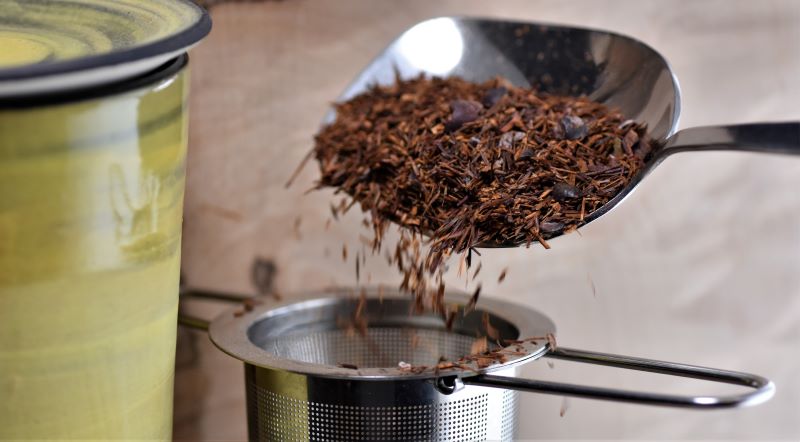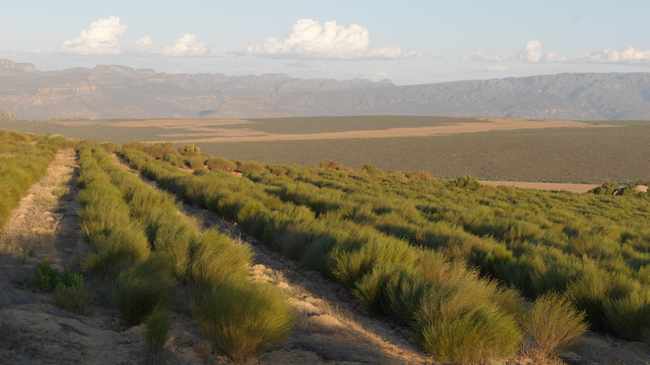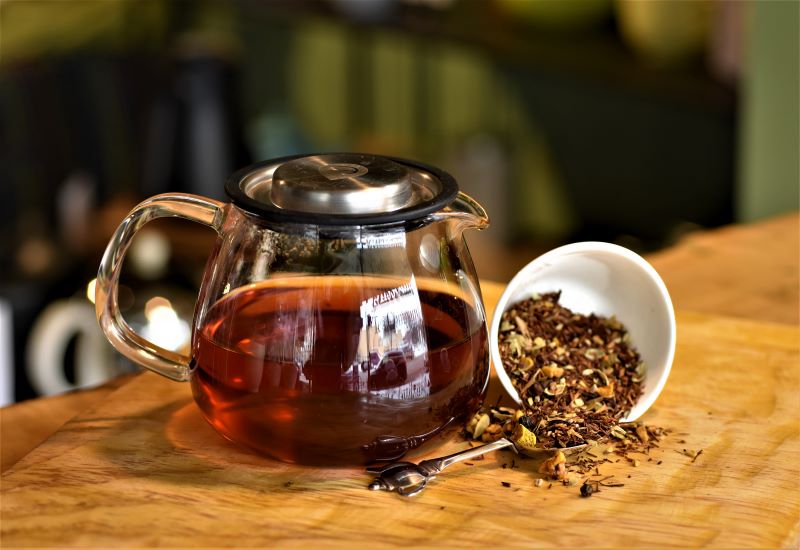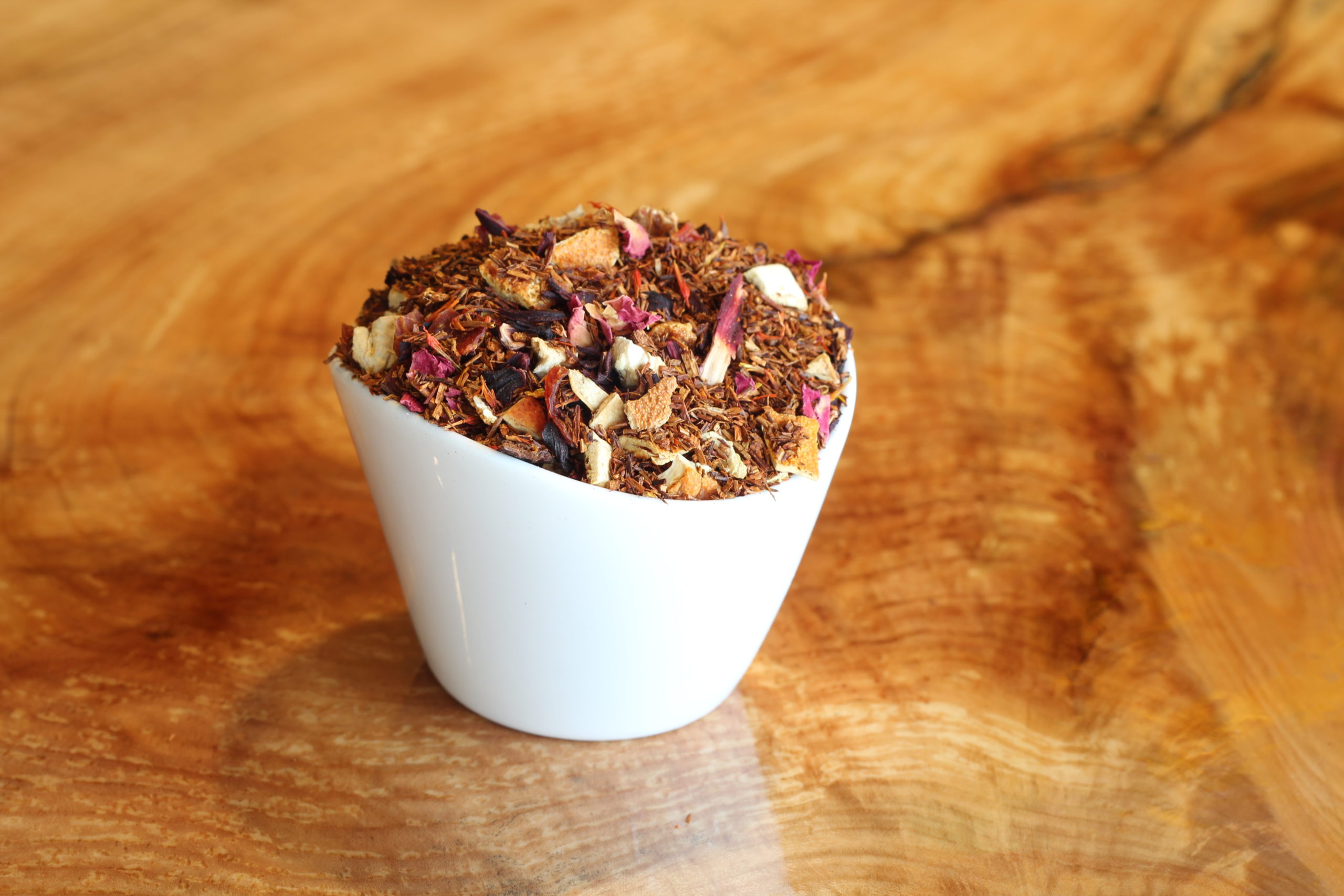Rooibos / Red Bush / Bush Tea Aspalathus linearis
Rooibos (pronounced ROY-boss), both healthy and caffeine-free, makes one of our favorite drinks. You may know it as South African Red Tea, Red Bush, Bush Tea, Mountain Tea, and “Red Gold.” Hints of vanilla make a lovely cup to enjoy with milk and honey on a chilly evening around the fire. Steep seven minutes minimum for optimal extraction of the phytonutrients and rich minerals in rooibos.
Medicinal Uses
Rooibos has long been drunk in Africa as both a refreshment and a healthy tea beverage. Said to alleviate symptoms of seasonal allergies, eczema, and arthritis, and aides with anti-aging and weight loss. May provide relief for palliating stomach cramps and diarrhea, especially colic in babies. Recent scientific studies show that rooibos helps with diabetes, heart health, digestion, and bone health. Its medicinal actions include: anti-inflammatory, immunomodulation, antispasmodic, bronchiodilator, lowers hypertension (blood pressure), antimutagenic, antidiabetic, and limits adrenal hormone production, such as cortisol. There are no known precautions with consuming this plant, which is caffeine-free, low in tannins, and high in antioxidants.
Historical View
The San tribe has a long ethnobotanical history of using this plant, and the Khoi tribe to a lesser extent. Taken with honey and fresh goat milk, it helps people sleep deeply. Afrikaans people brew it until it is so thick, you can hardly see the bottom of the cup. In many farmhouses, people simmer a handful of leaves on the stove for the entire day, and add more water as people consume it.
The Khoisan peoples shared their traditional knowledge with early Dutch colonizers. The Dutch renamed it “rooibos” or “red bush” and drank it in place of expensive black tea from England. Unfortunately, ethnobotanical records of rooibos do not exist more than 300 years ago, and no Khoi or San vernacular names have ever been recorded. All the common names of the Aspalathus linearis to date are of Afrikaans, Dutch, or English origin. These names include rooibos, naaltee, swarttee, koopmanstee, bossiestee, and bush tea.
Harvesting
The plant is a shrub-legume in the Fabaceae family (Pea family). When the needle-like leaves and tiny yellow flowers are picked, bruised, and oxidized, the leaves turn a reddish color, hence its name. Green rooibos, like green tea, dries without oxidation.
The harvest process resembles that of Camellia sinensis. The top 50cm of the plant is harvested annually during summer (December to February). Traditionally, pickers used sickles and bundled by hand, but mechanization now predominates. The needle-like leaves are bruised, oxidized, and left to dry in the harsh South African sun, where they turn a distinctive orange-red color. 10,500 tons of rooibos are harvested annually to serve the global market.
Exceedingly mineral-rich, rooibos was commercially cultivated since about 1994, and is one of the few wild species developed as a commercial crop. It takes 18 months for the plant to mature for harvest, and farmers replace the crop every 5-7 years. There are concerns regarding rooibos farming in the face of climate change.
Ecological View
The rooibos plant is endemic to a region of the Western Cape province of South Africa, in a 20,000 square kilometer biodiversity hot spot called the Fynbos biome, or Suid Bokkeveld. The area, Cederberg/Clanwilliam, lies 250 km north of Cape Town. It grows symbiotically with local microorganisms in a mountainous area with a unique temperature range, with a particular deep, well-drained acidic and coarse sandy soil. Bacteria create nodules on the roots, fixing the atmospheric nitrogen, which is conducive to neighboring plant growth.
Rooibos Teas
Lake Missoula has many healthy, caffeine-free teas that feature rooibos. Our Blood Orange Rooibos balances the vanilla notes of rooibos with juicy, mouthwatering citrus. Then Cape Town Grey is our caffeine-free take on a classic Earl Grey, with its bold, bergamot flavor. Gin & Cream Rooibos features notes of juniper, lavender, and vanilla, creating a unique taste with every sip. And our Rugger’s Rooibos is a straight Rooibos tea that showcases this African plant to its fullest.
Read new quarterly herbalism content by Greta de la Montagne on our blog page.
Written by: Greta de la Montagne, Edited by: Samantha Lepore & Heather Kreilick





